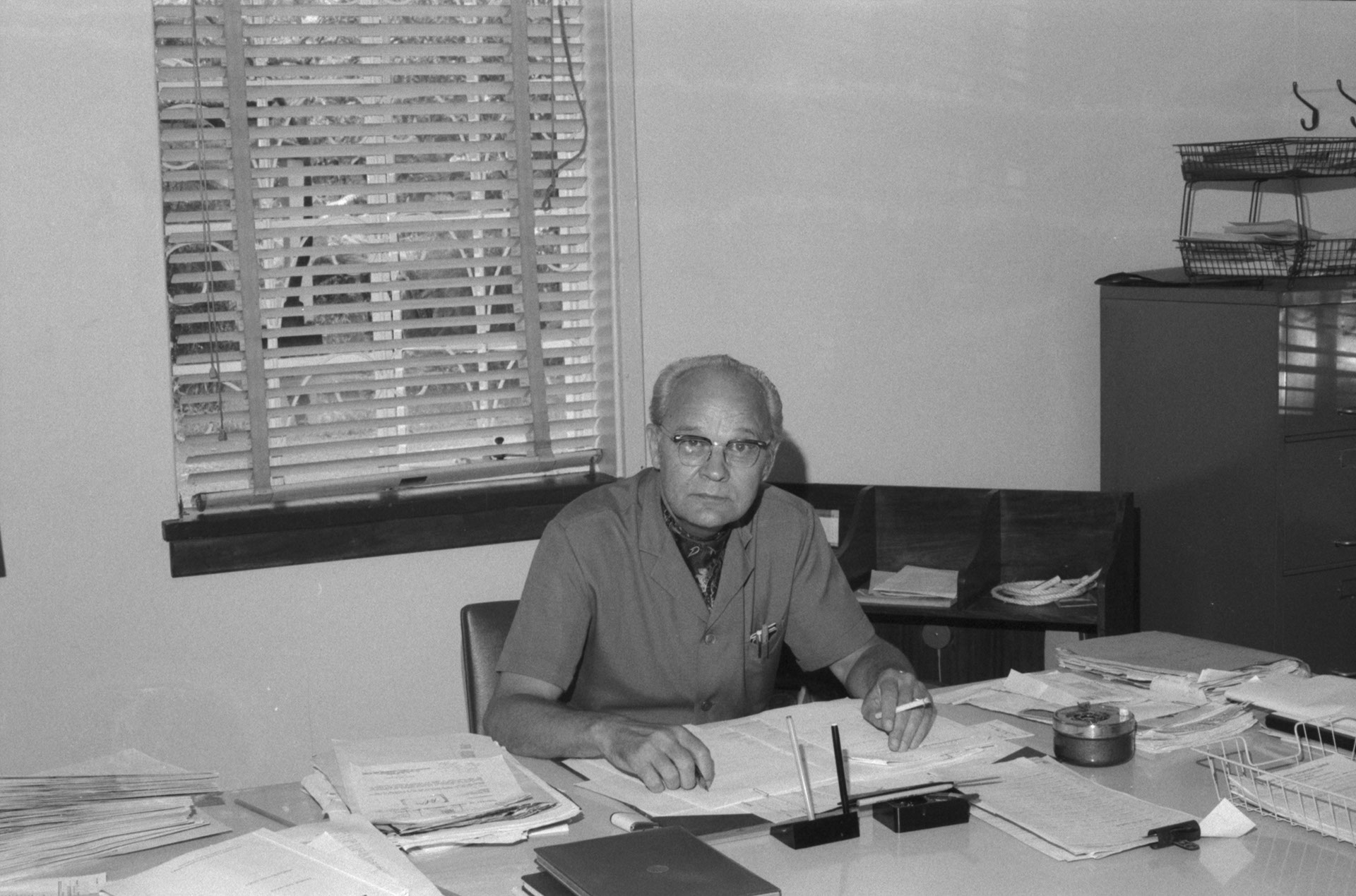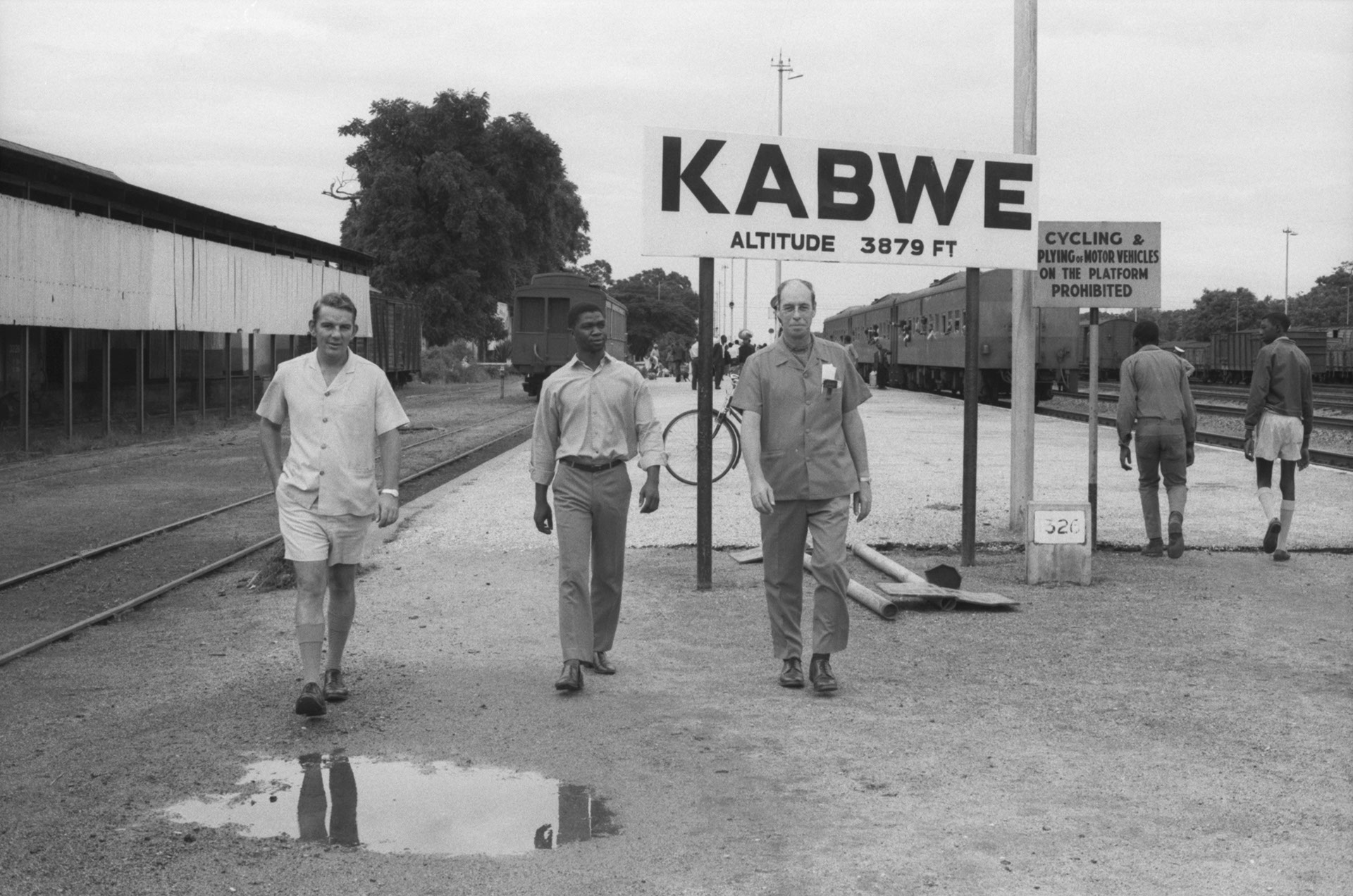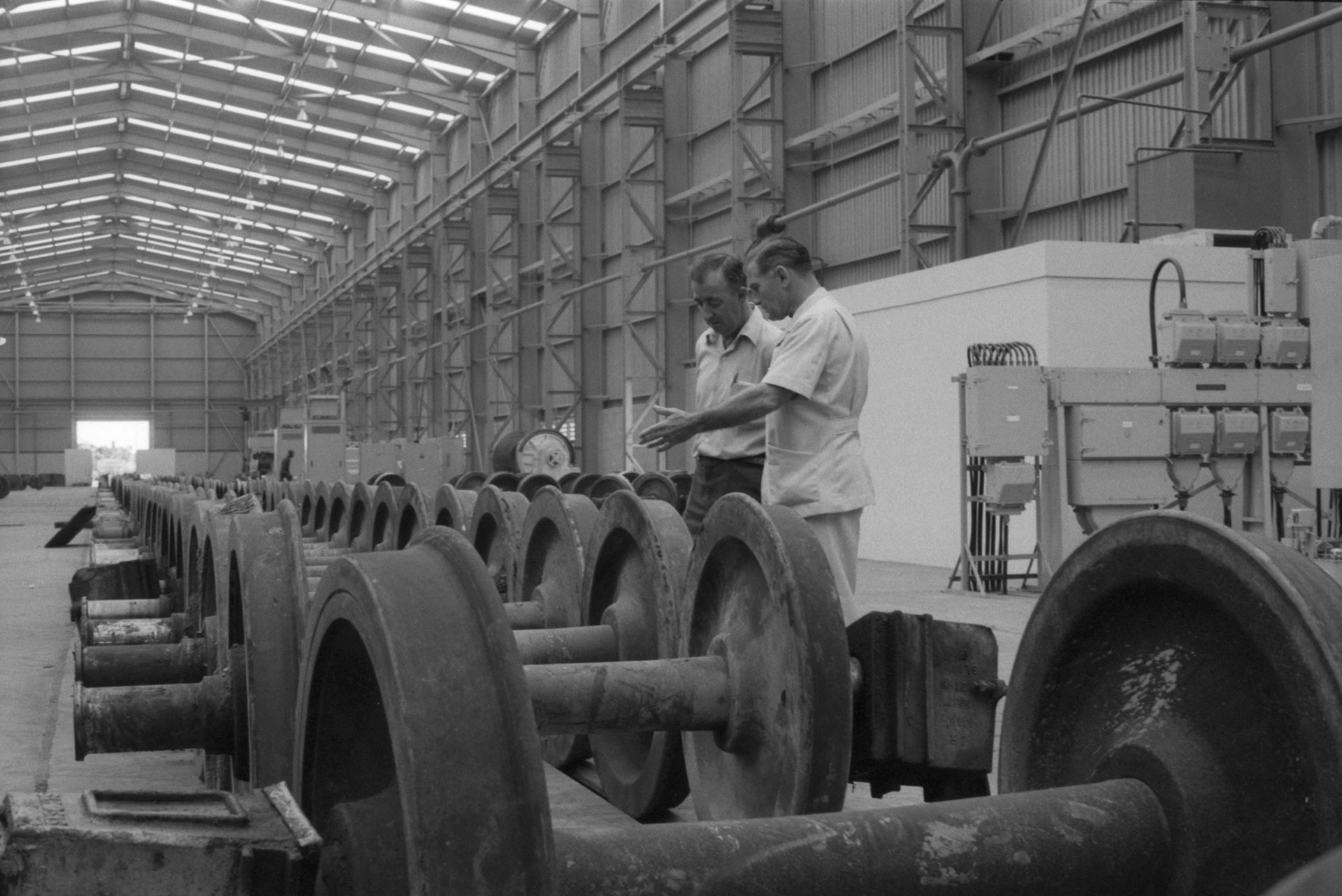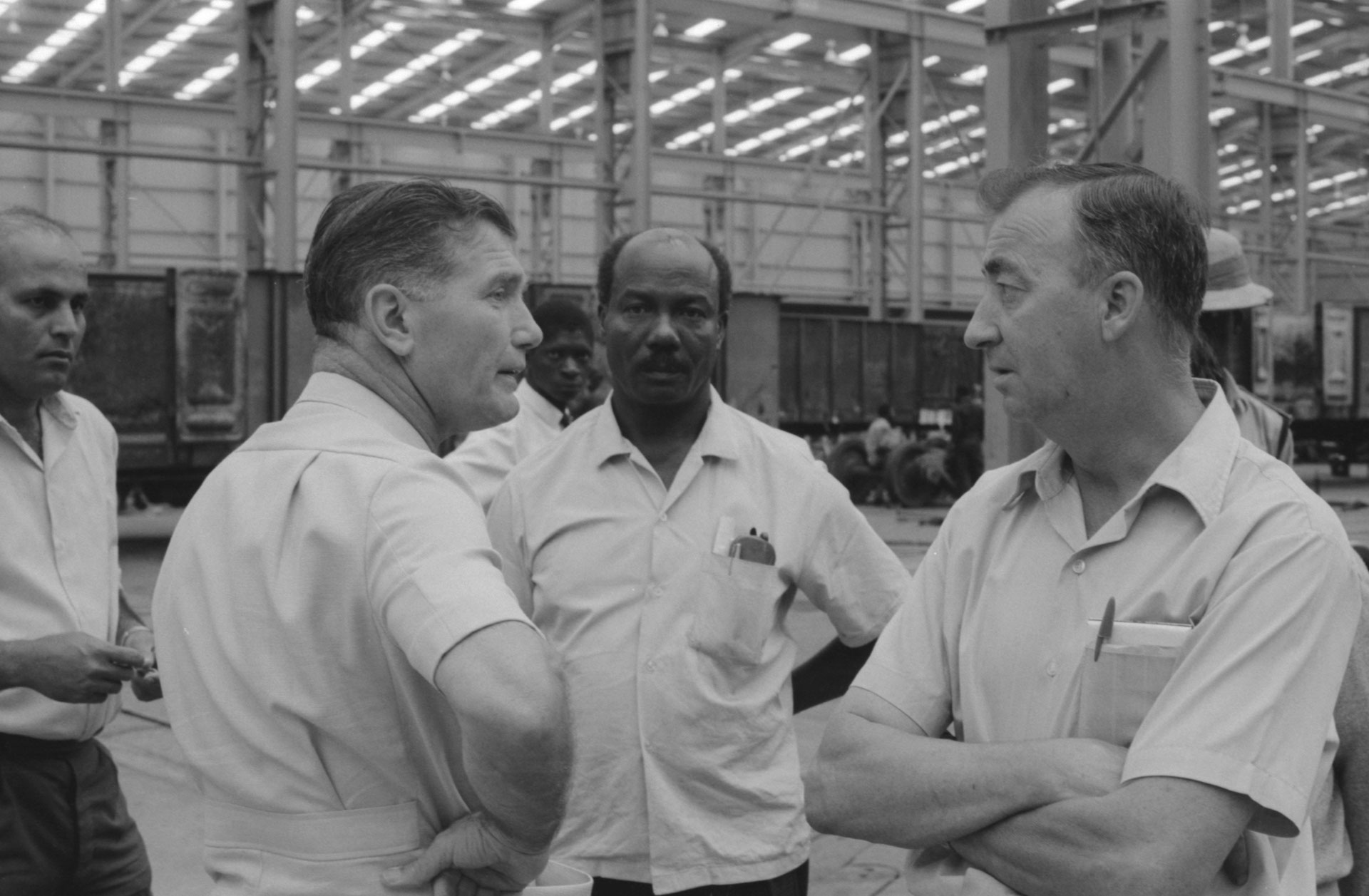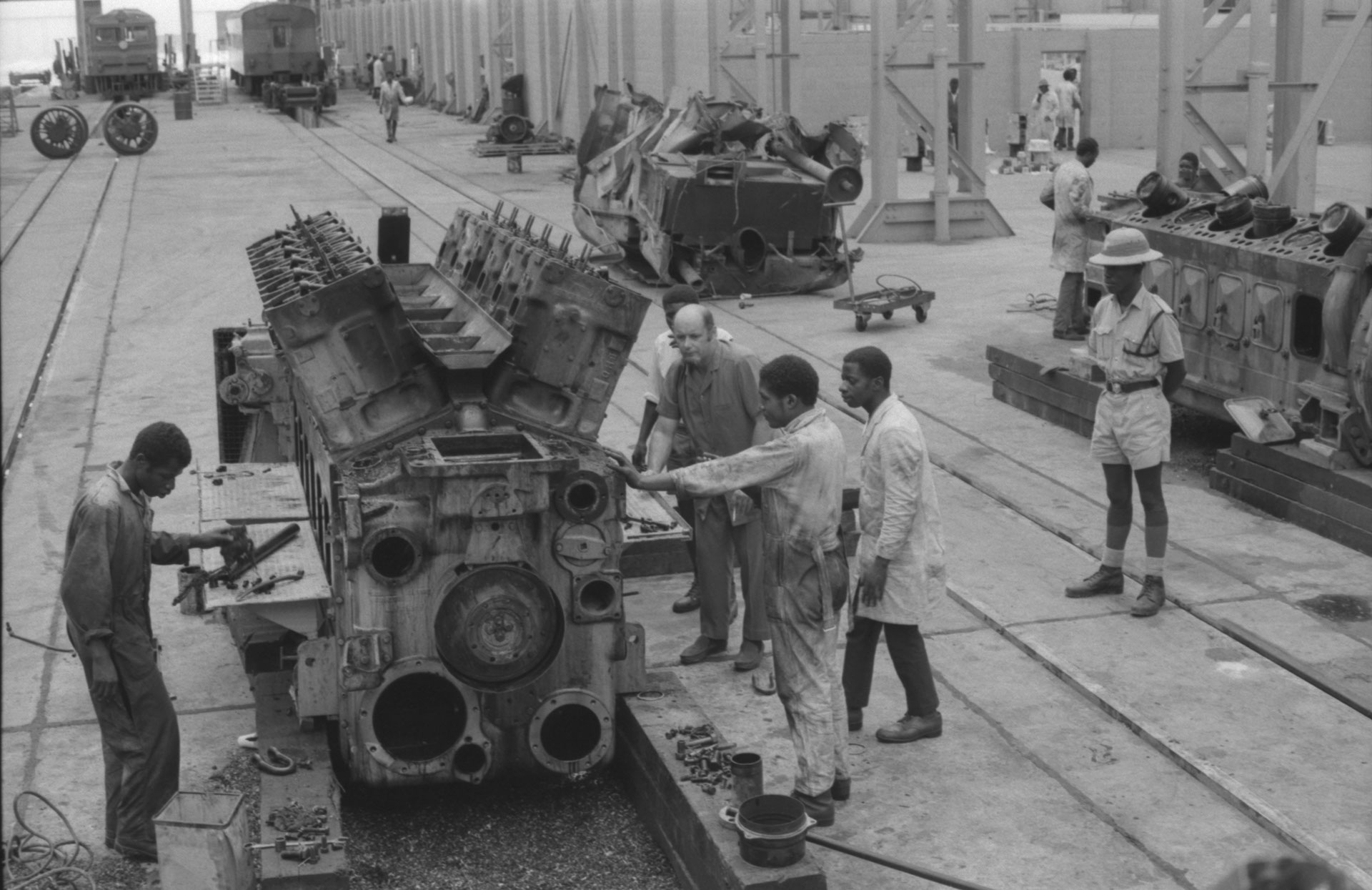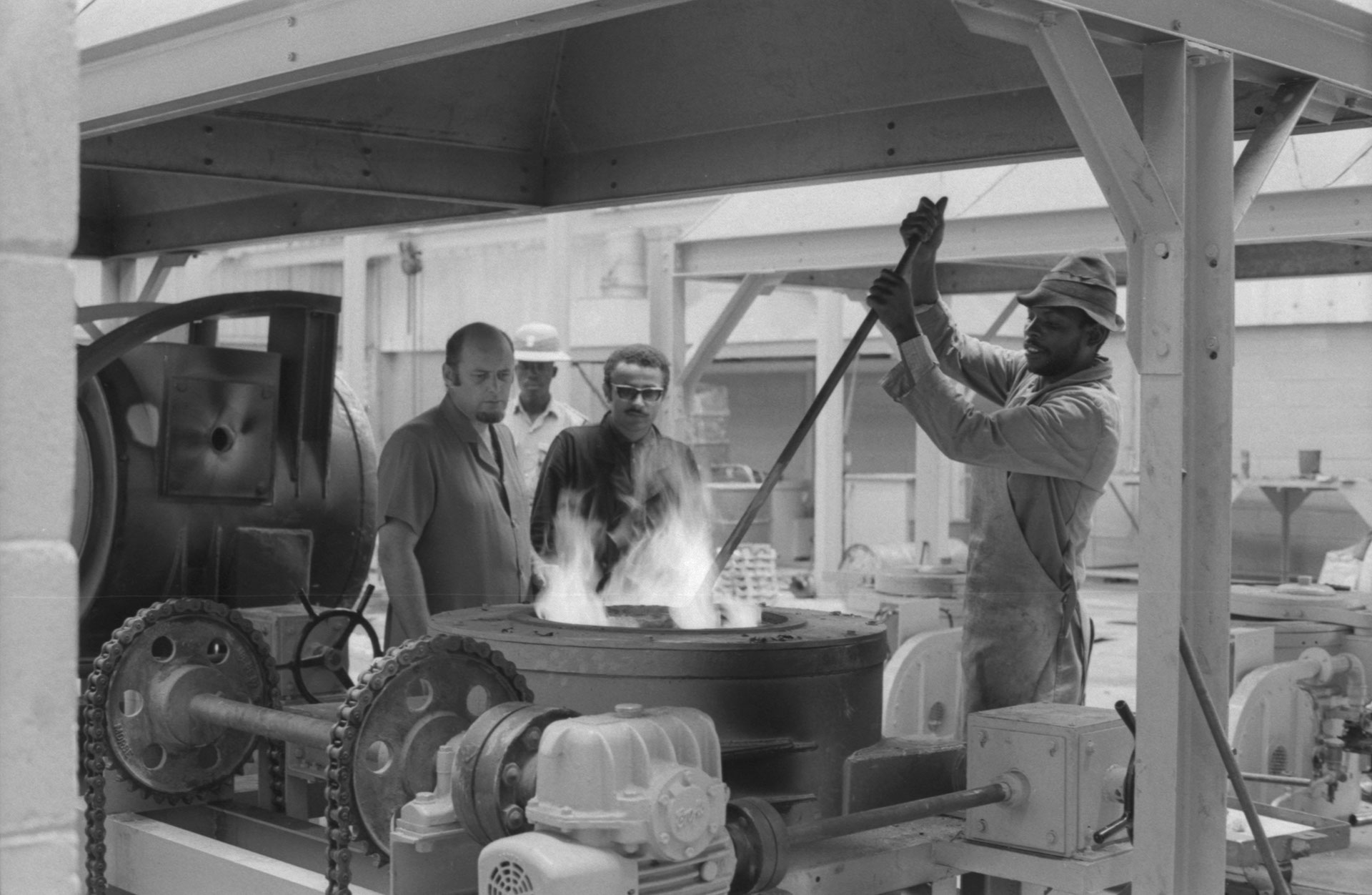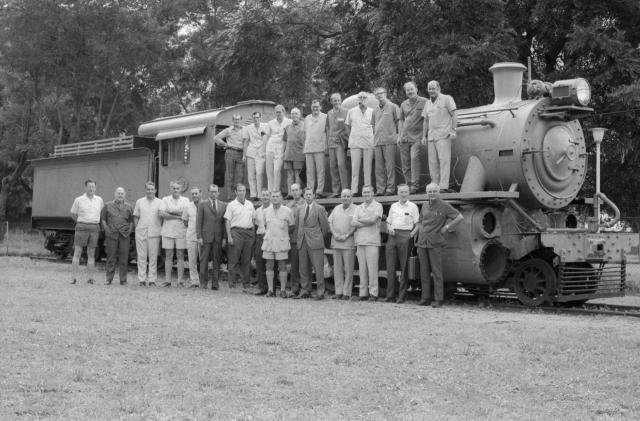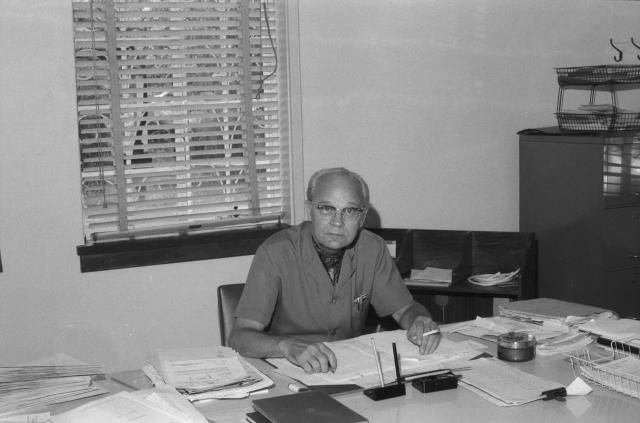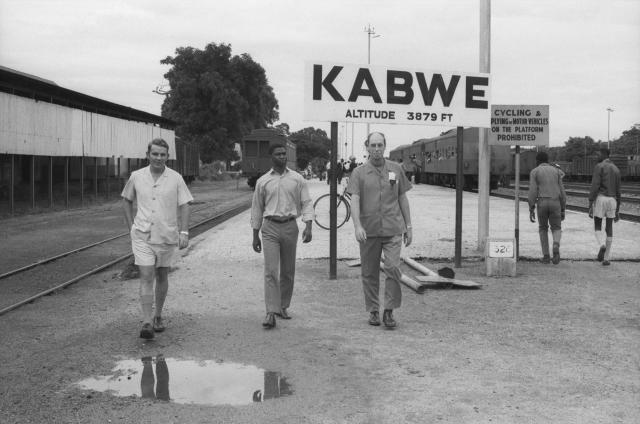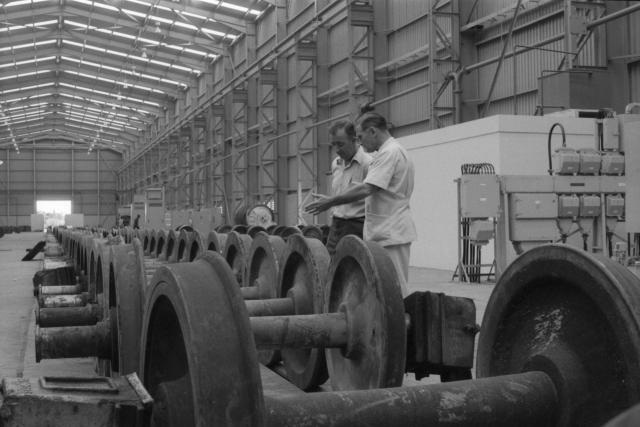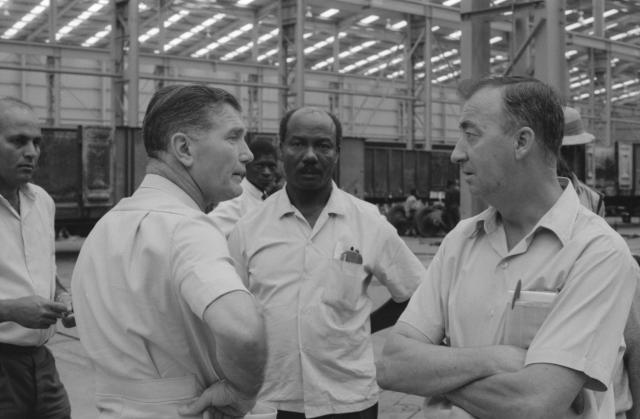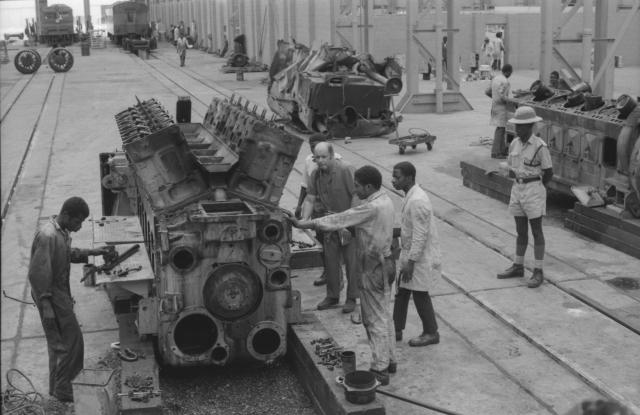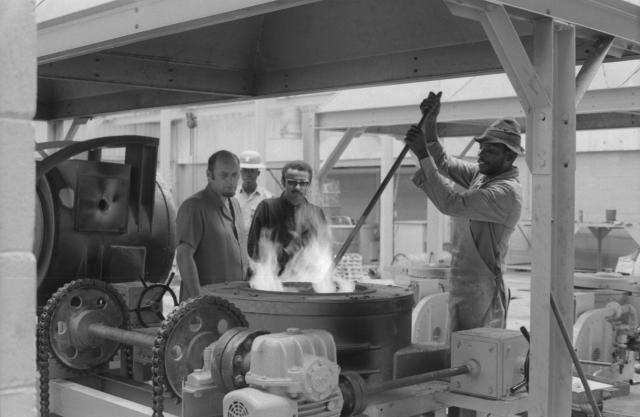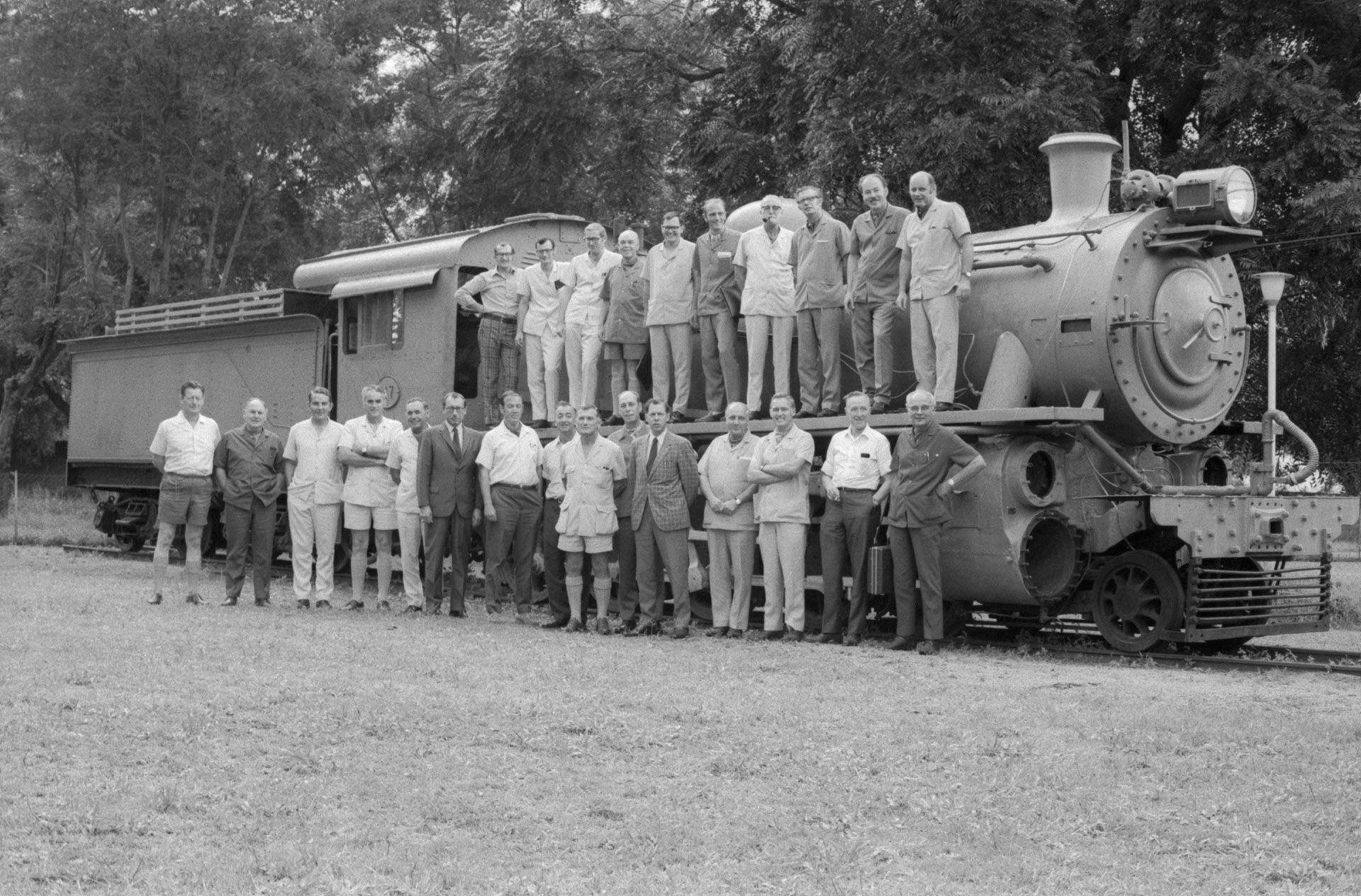
Photostory #515: Canadian National Railways in Africa
Photographers
Maker
National Film Board of Canada
Release Date
March 1, 1971
Collection
CMCP fonds
Credit Line
Canadian Museum of Contemporary Photography fonds, National Gallery of Canada Library and Archive
Main Text
In progress Photostory 1/6 : Canadian National Railways has sent a team of 23 men to Zambia, Central Africa, on a job that spells out a new enterprise for this modern railway -- the exporting of expertise.
The 23 experts, headed by Harry Fast, formerly manager of CN’s Rideau region at Belleville, Ontario, have taken over the management of Zambia Railways under a contract backed by a $2,500,000 loan agreement signed by the Canadian and Zambian governments last November. Under the terms of this agreement the Canadian interest-free loan is to help finance the management of Zambia Railways over a five-year period which began on December 19 1970.
The management contract and its supporting loan agreement are the result of a world-wide search by landlocked Zambia, anxious to update the services of its essential 650-mile link with the rest of the world. Zambia first asked Canada to send a team of consultants to Africa, but soon decided it would be better if Canadian railwaymen took over management of the railway.
Canada’s public-owned railway has been involved in overseas railways before, but only on a consultancy basis. The Zambian agreement marks CN’s first venture into the actual management of another railway.
Zambia’s railway is linked with the systems of Rhodesia and Mozambique to the south and south-east, and Congo-Kinshasa and Angola to the north and north-west. Overcoming cooperation problems with some of these countries poses a big problem since most of Zambia’s essential freight-- imports of maize and coal and exports of copper -- must travel by rail.
A major job for Mr. Fast is negotiating with the general managers of the neighbouring railways to secure a better service for Zambia. He says there are many things that can be done to improve services without violating political considerations.
Zambia’s railway line was first opened in 190b to reach the rich mineral deposits in what was then Northern Rhodesia. It crosses the Zambezi River just below the famous Victoria Falls and trundles north across rolling savannah for 650 miles to emerge in Congo-Kinshasa, just north of Zambia’s copperbelt. On the way it passes through the capital city of Lusaka and the mining town of Kabwe, formerly Broken Hill and now the headquarters of Zambia
Railways.
Mr. Fast and his team aim to overhaul Zambia Railways by introducing a more flexible and more commercial system of management. They intend using the same plan that changed the face of CN in Canada -- a plan that took ten years to fulfil. But Mr. Fast is confident that it will take much less than ten years to bring a new look to Zambia Railways.
Incorporated into the five-year contract is an obligation for the Canadian team to train Zambians to take over their jobs, so arrangements have been made to organize a management training programme covering an average of 16 man-months per year.
The Canadians also hope to improve Zambia Railways’ passenger service and to introduce such facilities as dining and sleeping cars. But the problem here is shortage of equipment. Zambia Railways operates on 3 ft. 6 ins. -wide tracks -- an unusually narrow gauge -- and second—hand equipment is hard to find.
However, Mr. Fast is now investigating the possibility of shipping equipment to Zambia from the one place in Canada with a 3 ft. 6 ins. gauge railway -- Newfoundland.
Subjects:
Locations:


